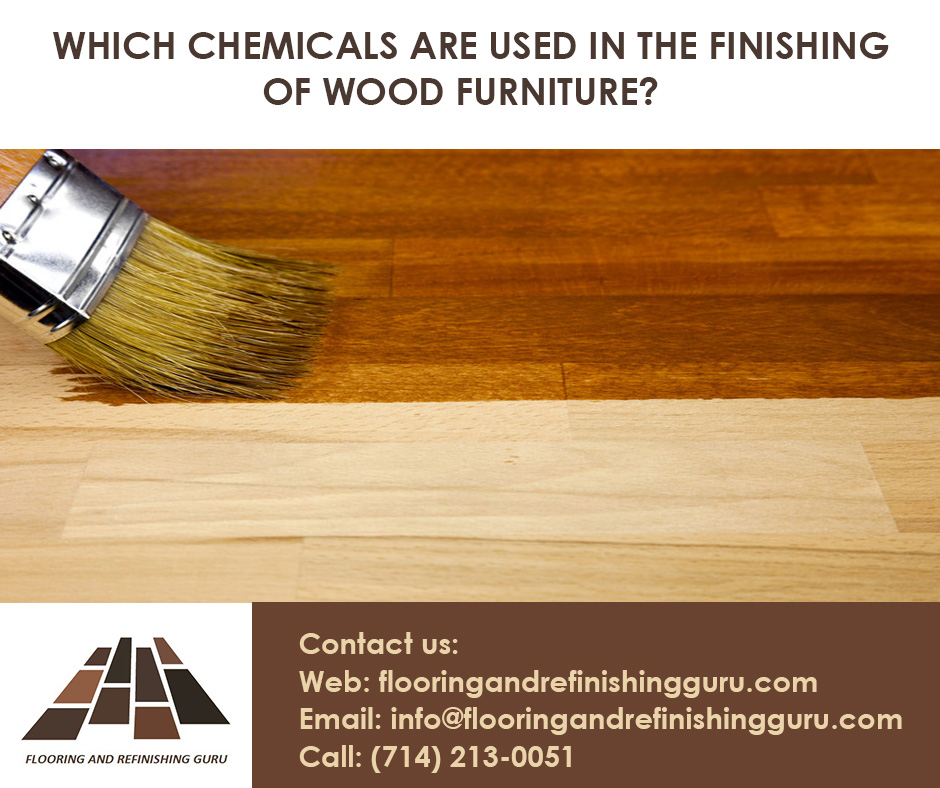
The finishing process is the final step in enhancing the appearance and longevity of wood furniture. Various chemicals, such as varnish and lacquer are used to reinforce fixtures and ensure a shiny texture. They can be purchased from nearby stores or online: Each chemical mixture has its own advantages and drawbacks. Hire experts (Flooring and Refinishing Guru) and relish a modernized look of your décor.
Stains and Dyes
Stains and dyes can alter the natural color of wood by creating different hues. They penetrate the wood fibers and enhance the grain patterns with clarity. Stains are oil or water-based, purchasable in a wide range of shades, i.e., from light to dark. Dyes, on the other hand, are water-based and can produce vibrant, transparent colors.
Sealers
Sealers are essential in preventing moisture penetration into the wood, which can lead to warping, cracking, and decay. These chemicals create a protective barrier on the wood surface, enhancing resistance to various liquids, including water. Common types of sealers include shellac, lacquer, polyurethane, and varnish.
Clear Coats
A clear coat provides a glossy, satin, or matte finish to the furnishings. It protects the wood against scratches, dirt, water rings, and smears. Moreover, it enhances the aesthetic appeal and improves its resistance to moisture and UV radiation. Polyurethane, acrylic, and lacquer are used for coating fixtures and fittings: They form a hard, durable film on the wood surface, ensuring long-lasting protection.
Following are some products for finishing coats:
- Varnishes
Varnishes are transparent, protective coatings that enhance the wood’s natural beauty and provide durability. They are available in different sheens (gloss, semi-gloss, satin).
- Shellacs
Shellac is a natural resin-based finish that provides a glossy and protective coating. It dries quickly and can be used as a standalone finish or as a sealer.
- Lacquers
Lacquers are fast-drying finishes that can be sprayed or brushed onto wood surfaces. They provide a durable and glossy finish.
Fillers and Putties
Fillers and putties repair imperfections in the wood, such as cracks, dents, and gaps. These mixtures are composed of solvents, binders, and additives. Besides repairing the wooden architecture, fillers and putties smoothen the surface and prepare it for the finishing process. The final texture can be colored according to the surface or left as it is.
Sanding and Finishing Aids
Sanding and finishing chemicals contribute to the overall quality of the furniture. Sanding aids, like mineral spirits, are used to lubricate the sandpaper and reduce clogging, resulting in a smoother surface. Finishing aids, such as wood conditioners are applied on stains to ensure absorption and blotching.
Adhesives
Adhesives play a vital role in bonding wooden components together, ensuring structural integrity. Common adhesives include wood glues, epoxy resins, and cyanoacrylates. It is important to choose wood-prone adhesives because of their bonding strength and resistance to moisture and temperature changes.
Why are Environmental Conditions Important?
When using chemicals in the finishing process, it is essential to consider their environmental impact. Several finishing products contain volatile organic compounds (VOCs) that can contribute to air pollution and pose health risks. However, the furniture industry has made significant strides in developing low-VOC and water-based alternatives that minimize environmental impact without compromising performance. Moreover, disposal of chemicals and proper ventilation in the finishing area is crucial to ensure a safe working environment. Additionally, using reclaimed or sustainable-sourced wood and finishing products with eco-friendly certifications can further minimize the environmental footprint of wood furniture production.
Conclusion
Finishing coats are important for wooden architecture in closed structures, such as homes, hotels, and offices. The layering adds depth, richness, and beauty to the natural grain of the surface. It can be used to achieve various finishes such as matte or satin. Finishing coats create a barrier that helps prevent water absorption. This is especially important for exterior wood surfaces exposed to the elements.
Wood finishes act as a protective layer against wear and tear, including scratches, stains, and abrasion. The coats provide a durable surface that helps maintain the integrity and appearance of the wood over time.
If you are interested in enhancing the life of your furniture, contact Flooring and Refinishing Guru today.

